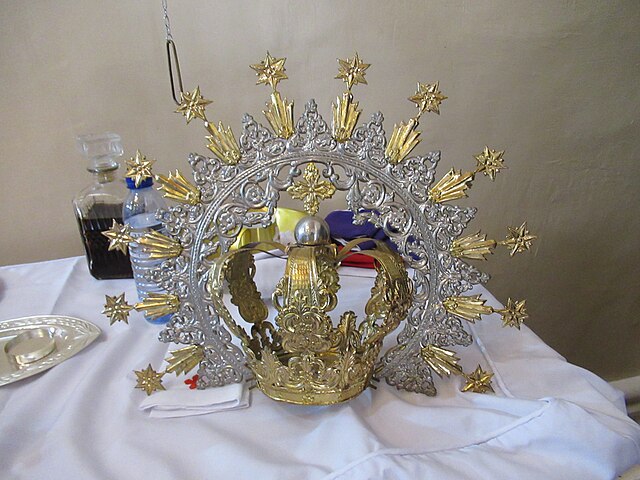A votive crown is a votive offering in the form of a crown, normally in precious metals and often adorned with jewels. Especially in the Early Middle Ages, they are of a special form, designed to be suspended by chains at an altar, shrine or image. Later examples are more often typical crowns in the style of the period, either designed to be placed on the head of a statue, or re-used in this way after donation.
Detail of a suspended votive crown from Visigothic Spain, before 672 AD. Part of the Treasure of Guarrazar offered by Reccesuinth. Out of view are chains for suspension above, and a Byzantine pendant cross below. Alternate view.
Byzantine votive crown, given by Leo VI (r. 886-912), now in the Treasury of San Marco, Venice
One of many crowned statues of the Virgin Mary carried in the processions of Holy Week in Seville.
Statue crown temporarily removed, Obando Church, Philippines.
A votive offering or votive deposit is one or more objects displayed or deposited, without the intention of recovery or use, in a sacred place for religious purposes. Such items are a feature of modern and ancient societies and are generally made to gain favor with supernatural forces.
Votive paintings in the ambulatory of the Chapel of Grace, in Altötting, Bavaria, Germany
Mexican votive painting of 1911; the man survived an attack by a bull.
Part of a female face with inlaid eyes, Ancient Greek Votive offering, 4th century BC, probably by Praxias, set in a niche of a pillar in the sanctuary of Asclepios in Athens, Acropolis Museum, Athens
Bronze animal statuettes from Olympia, votive offerings, 8th–7th century BC








